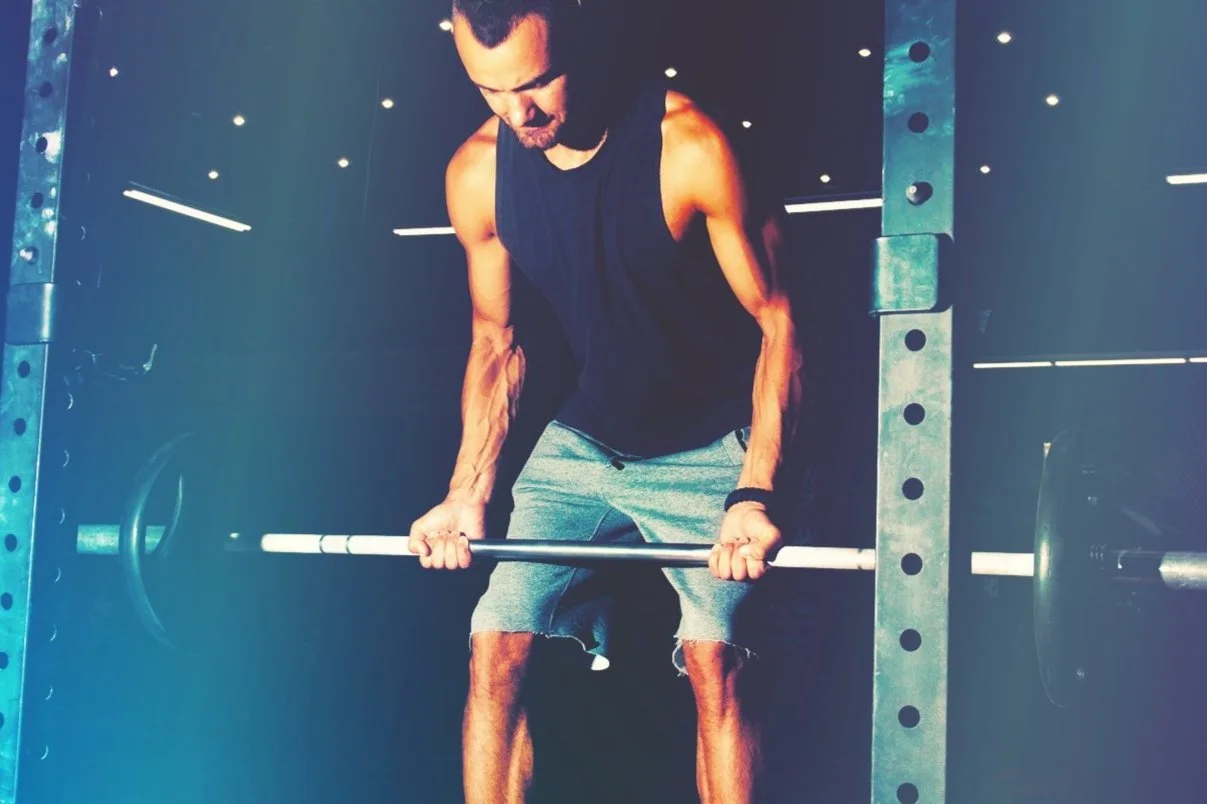How to Improve Your Deadlift: 10 Tips for Strength and Power
For surfers, a strong foundation helps with balance, control, and explosive movements—just like the deadlift, one of the most effective exercises for building total-body strength. While this article isn't solely for surfers, improving your deadlift can boost overall athleticism, helping you stay strong and stable both in the gym and out on the water. If the deadlift has become the dreadlift lately, there are 10 ways to improve this super multi-joint exercise. Don’t give up; make up your mind now that the deadlift is here to stay. In no order, here are 10 elements to focus on that will make you more efficient at performing this compound movement.
Alter your stance.
Chances are, there are adjustments you can make to your stance that will improve your performance as well as comfort. Look at your feet; are you standing too narrow? This puts more pressure on the lower back and increases the distance you must travel to reach the bar, meaning that greater range of motion will be necessary to move the weight.
Widen the stance for a more solid base of support and to shorten the range of motion. The shortening may not be that much but shortening it by just an inch can make a difference.
Be aware of your arm length relative to your height. If you have relatively short arms, this will require you to bend over a little more to reach the bar, making the range of motion greater than if your arm span were even just two inches longer.
To counteract this biomechanical disadvantage, you should widen your stance, which will bring your hips and lower back (fulcrum) closer to the bar. Another way to get closer to the bar without breaking form is to point the feet out a little bit. Many champion powerlifters do this; it is perfectly legitimate to have a wide, toes-pointed-out stance in a deadlift.
A very wide stance with feet pointed out is called the sumo stance, and many people find that this is most comfortable after having struggled for a long time with a more conventional stance.
Make sure you’re not rounding your back.
A rounded back will make the deadlift uncomfortable for many people. There should always be an arch in the lower back, or, at least, the lower back should be “straight,” meaning, no rounding. It’s difficult to check your profile in a mirror when deadlifting, so have a friend or personal trainer inspect your form. If your back tends to round, then use a lighter barbell until this problem is resolved.
Use an underhand grip.
Have you been using an overhand (palms facing you) grip all this time? Try a supinated grip (palms facing away from you) and see how that feels. You may be pleasantly surprised at the comfort level. When doing sets of deadlifts, don’t use the same grip for all sets. Switch back and forth between overhand and underhand. In fact, you can even try a mixed grip: one hand over and one hand under.
Man performing a deadlift with an underhand grip, focusing on engaging his back and biceps while maintaining proper form for maximum strength and stability.
Work with hand grips.
For some people, the weakest link is their grip; it expires before the bigger muscles do, forcing them to end the set prematurely. The grip (which is controlled by forearm muscles) can be strengthened with hand grip workouts.
Use a fat bar device.
Deadlifting with a fat bar attachment, which increases the diameter of the barbell where it’s gripped, will force the forearm muscles to adapt and create a more secure grip. Fat grip devices are sold online. These can also be used for other pulling motions, which will further increase strength and durability in the grip.
Try chalk.
If you find that sweaty palms interfere with your grip, rub your hands with weightlifter’s chalk; this will help tremendously.
Be mindful of leg positioning during the lift.
You may be unknowingly doing the straight-leg version of a deadlift, which is more difficult since fewer of the quad and gluteus maximus muscles are recruited, and a lot of tension is placed on the hamstrings. If you’ve been keeping your legs more straight than bent, and prefer bent legs, then make a conscious effort to sink down into a partial squat so that the lift is powered by the quads and glutes.
Sink down into a partial squat so that the lift is powered by the quads and glutes.
Keep eyes straight ahead.
Keep your visual attention on your neck or face. Do not look down as you lift.
Make sure bar is as close to shins as possible.
This is extremely important. The further the bar is away from the fulcrum, in terms of forward distance, the more difficult the movement will be. You want to minimize the distance between the fulcrum and the “resistance arm.”
Do deadlifts at the beginning of the training session.
This exercise can be your first one of the workout, but make sure you warm up efficiently. If you do deadlifts after spending time exhausting yourself with squats, leg presses, chin-ups and rows, you will be compromised. However, the deadlift need not be the very first exercise in a session. If you do them after squats or weighted lunges, for instance, you will be very warmed up and should be able to perform heavy lifts after only one warm-up set. If your “heavy” lifts are extremely heavy, then do a few warm-up sets.
Unfortunately, most people do not perform the deadlift, and one of the reasons is fear that they will get injured. Textbook form can be mastered by spending adequate time practicing the movement with a very light barbell. Furthermore, ancillary exercises such as leg presses, hamstring curls and good mornings will enhance deadlift performance.




